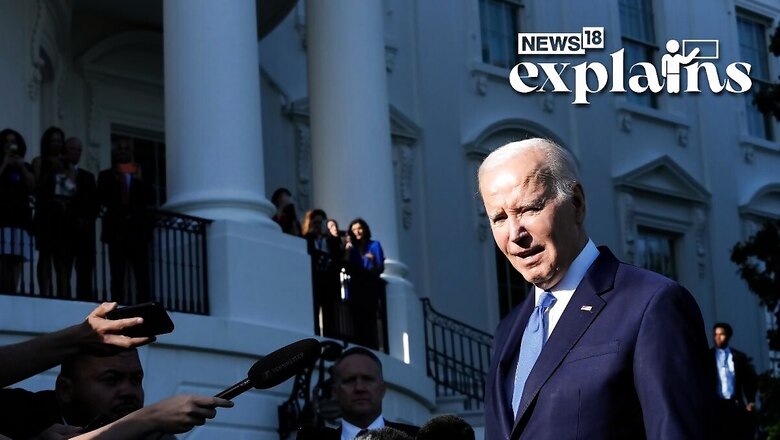
views
US President Joe Biden and Republican leader Kevin McCarthy have reached an agreement to raise the debt ceiling, averting a potential default and providing relief to the United States just before the deadline.
The deal will be presented to Congress for a vote on Wednesday, narrowly avoiding the June 5 deadline, known as the “X-date,” when the Treasury estimated that the government would run out of funds to meet its financial obligations, which could have resulted in severe consequences for the world’s largest economy.
President Biden expressed his satisfaction with the agreement in a statement, describing it as “good news for the American people.” He emphasized that it would prevent a catastrophic default, which could have led to an economic recession, significant losses in retirement accounts, and the loss of millions of jobs.
Kevin McCarthy, who had discussions with President Biden to finalize the agreement, acknowledged that there is still much work ahead but believes that the agreement in principle is in the best interest of the American people. Kevin McCarthy, the Republican speaker, also mentioned that he would have further consultations with the president on Sunday. He expressed his intention to oversee the final drafting of the bill, which would then be presented for a vote in the House on Wednesday.
Compromises
The process of raising the debt ceiling is typically routine and non-controversial, allowing the government to continue borrowing money and maintain its financial stability.
This year, Republicans insisted on significant spending cuts, particularly in social programs aimed at assisting the less privileged, as a condition for raising the debt ceiling. They argued that addressing the nation’s enormous $31 trillion debt required taking tough measures. President Biden, on the other hand, maintained that he would not engage in negotiations over spending matters in exchange for raising the debt ceiling. He accused the Republicans of holding the economy hostage.
Both sides have now made compromises to reach an agreement. A source familiar with the negotiations told AFP, the deal involves suspending the debt ceiling for two years, eliminating the need for negotiations in 2024, which coincides with the presidential election season.
While the significant spending cuts Republicans sought are not included, the source mentioned that non-defense spending will remain relatively stable next year and only experience nominal increases in 2025. The agreement also introduces new regulations for accessing specific federal assistance programs. However, the source indicated that President Biden’s key initiatives, such as the Inflation Reduction Act and the student debt relief plan, will be protected under the deal.
Here are the key components of the deal:
TWO-YEAR DEBT INCREASE, SPENDING LIMITS: The agreement includes a two-year debt limit increase that extends beyond the 2024 presidential election. It also keeps non-defense spending relatively stable in the 2024 fiscal year and provides a 1% increase in the following year.
VETERANS CARE: The deal ensures full funding for medical care for veterans, including the allocation specified in President Biden’s proposed 2024 budget blueprint. It also includes funding for a dedicated fund to support veterans exposed to toxic substances or environmental hazards, with an allocation of $20.3 billion as proposed by Biden.
WORK REQUIREMENTS: While House Republicans had previously proposed expanding work requirements for certain government assistance programs, such as Medicaid, those provisions were not included in the final agreement. However, the agreement does expand work requirements for the Supplemental Nutrition Assistance Program (SNAP, formerly known as food stamps), raising the age for existing work requirements from 49 to 54. These changes would expire in 2030, and the agreement also aims to reduce the number of vulnerable individuals subject to work requirements across all age groups.
SPEEDING UP ENERGY PROJECTS: The deal incorporates changes to the National Environmental Policy Act to establish a single lead agency responsible for developing environmental reviews, with the goal of streamlining the process for energy projects.
WHAT WAS LEFT OUT: The Republicans’ proposal to repeal President Biden’s plan to waive a portion of student loan debt, ranging from $10,000 to $20,000, was not included in the agreement. The fate of Biden’s student loan relief program will ultimately be determined by the Supreme Court, which expressed skepticism about its legality during oral arguments. A decision is expected before the end of June.
AFP, Associated Press contributed to this report




















Comments
0 comment